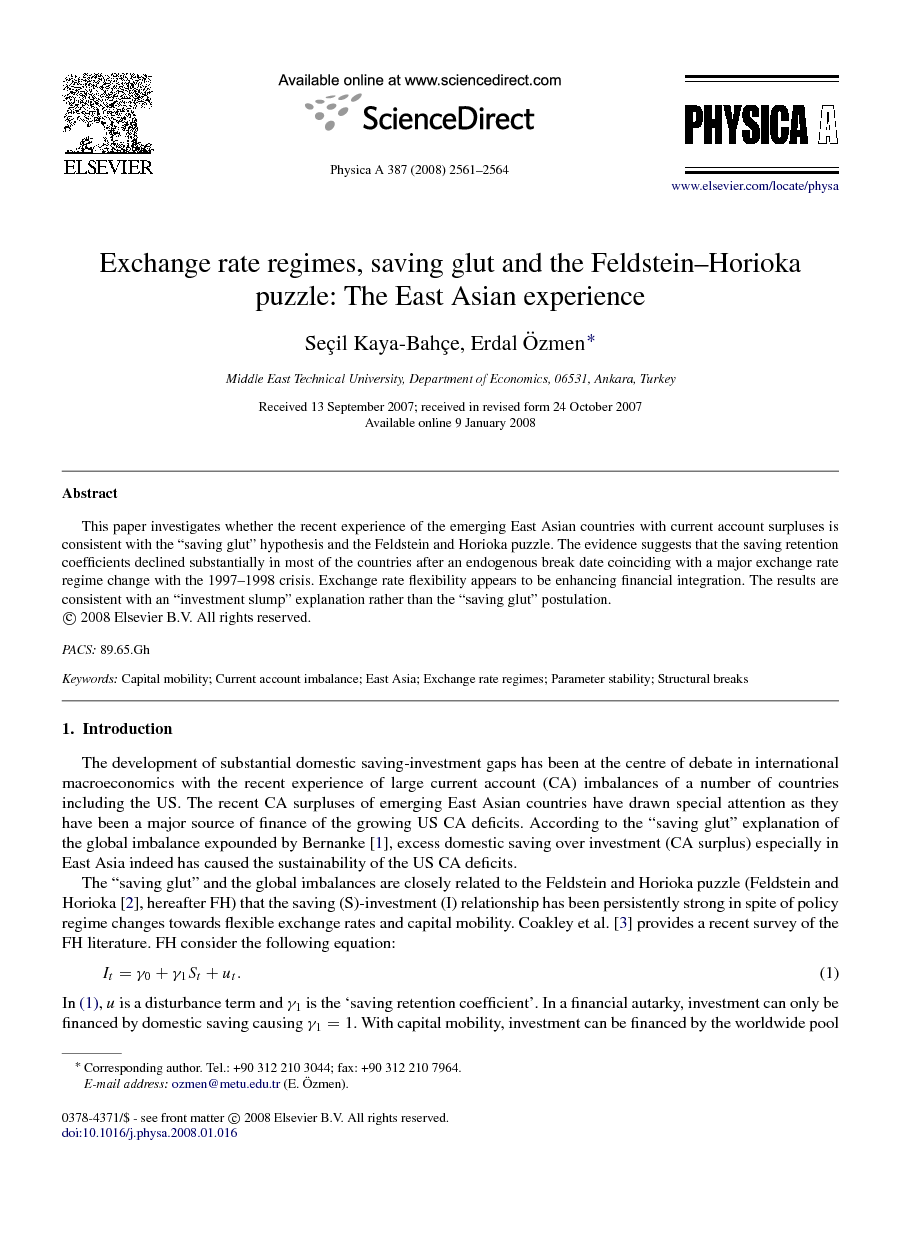ترجمه فارسی عنوان مقاله
رژیم نرخ ارز، صرفه جویی در عرضه بیش از تقاضا و پازل فلدستین هوریوکا : تجربه شرق آسیا
عنوان انگلیسی
Exchange rate regimes, saving glut and the Feldstein–Horioka puzzle: The East Asian experience
| کد مقاله | سال انتشار | تعداد صفحات مقاله انگلیسی |
|---|---|---|
| 9168 | 2008 | 4 صفحه PDF |
منبع

Publisher : Elsevier - Science Direct (الزویر - ساینس دایرکت)
Journal : Physica A: Statistical Mechanics and its Applications, Volume 387, Issue 11, 15 April 2008, Pages 2561–2564
ترجمه کلمات کلیدی
تحرک سرمایه - عدم توازن حساب جاری - شرق آسیا - رژیمهای نرخ ارز
کلمات کلیدی انگلیسی

